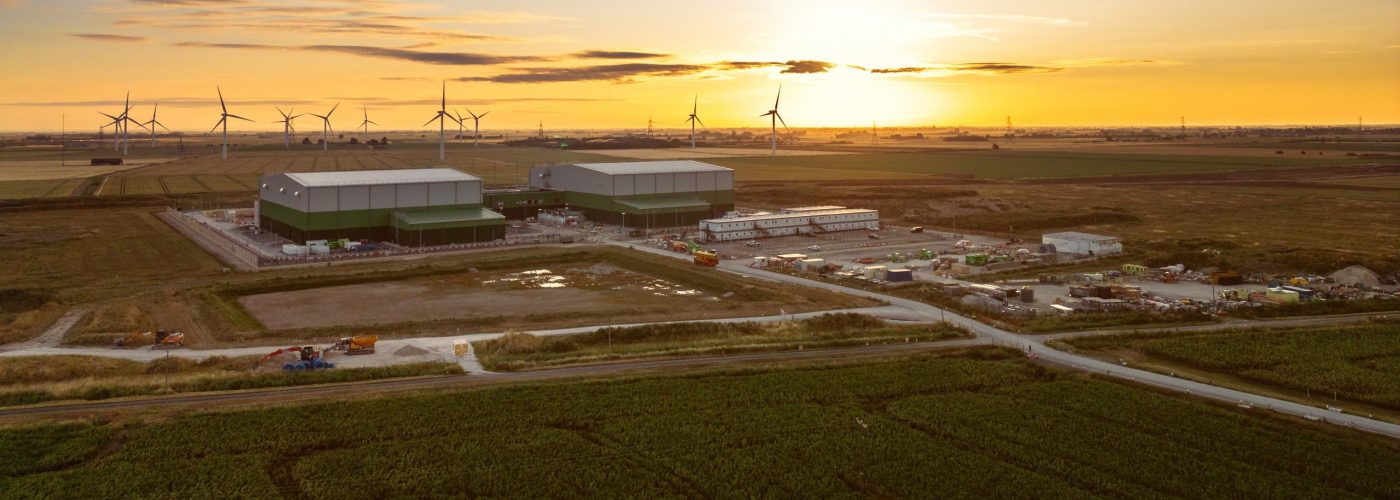- National Grid’s record-breaking new interconnector was switched on today
- Viking Link can transport enough electricity to power up to 2.5 million UK homes
- £1.7 billion link stretches for 475 miles between UK and Denmark
- It will bring more than £500 million in savings for UK consumers in the first ten years
The world’s longest land and subsea interconnector started commercial operations at the end of December last year (2023).
National Grid’s new Viking Link electricity interconnector became operational this afternoon transporting power between the UK and Denmark. The link has a capacity of 1.4 GW and stretches for 475 miles under land and sea to join Bicker Fen substation in Lincolnshire with Revsing substation in southern Jutland, Denmark.
The £1.7 billion project is a joint venture between National Grid and Danish System Operator, Energinet, and has the capacity to transport enough electricity for up to 2.5 million* UK homes, bringing over £500 million of cumulative savings for UK consumers over the next decade* due to cheaper imported power from Denmark.
Construction on Viking Link, National Grid’s sixth interconnector, started in 2019, with more than fourmillion working hours spent to get to this point.
National Grid’s interconnector business is run by National Grid Ventures (NGV), which operates outside of National Grid’s core regulated businesses in the UK and US. NGV develops, operates and invests in energy projects, technologies and partnerships to accelerate the development of our clean energy future.
Viking Link will bring huge benefits for UK consumers including cheaper, lower carbon power and increased energy security as the UK can call on additional power from Denmark when needed.
Initially, Viking Link will be operating at a capacity of 800MW before increasing up over time to 1.4GW. National Grid and Energinet will be working together to bring the asset up to full capacity over the coming year.
In its first year of operation Viking Link is expected to save approximately 600,000 tonnes of carbon emissions – this is equivalent to taking roughly 280,000 cars off the road.*
President of National Grid Ventures Katie Jackson said: “This record-breaking new link is a fantastic example of engineering and collaboration with our partner, Energinet. As we deploy more wind power to meet our climate and energy security targets, connections to our neighbouring countries will play a vital role increasing security of supply and reducing prices for consumers.
“Stretching further across land and sea than any of our existing links, it connects the UK to clean, green Danish energy, improving security of supply and bringing huge carbon and cost savings for UK consumers.”
Viking Link has a converter station on each end of the cable where the power is transformed into the correct frequency before being transported onto each country’s transmission systems. Principal Contractor Siemens Energy built the converter station in the UK while Energinet built the Danish converter station. Siemens Energy have designed, installed and commissioned the electrical assets on both sides.
The HVDC offshore cable was manufactured and laid by Prysmian Group. The cable was laid on the seabed using a custom-made vessel The Leonardo Da Vinci which was then buried using Asso trenchers.
Prysmian Group manufactured the HVDC land cable, which was installed by Balfour Beatty, the offshore section was manufactured and installed by Prysmian Group in the UK and the Danish land section was manufactured by NKT and installed by Monck.
The UK land cable was made up of 118 sections stretching for 67km between Bicker Fen and Sutton-on-Sea where the subsea cable begins. It was connected to the UK’s National Transmission Network by National Grid Electricity Transmission at the existing Bicker Fen substation.
Interconnectors enable the fast, flexible sharing of energy between countries, making them the perfect tool for managing the intermittent nature of renewable energy sources.
The switch on was a proud moment for Managing Director of National Grid Interconnectors Rebecca Sedler. She said: “Viking Link is an achievement for both Denmark and the UK, and consumers in both countries will benefit from this infrastructure for many years to come. The hard work and collaboration of our teams, accounting for more than four million labour hours, highlights National Grid’s dedication to the UK’s clean energy transition.”
National Grid launched the UK’s first interconnector (IFA) to France in 1986. Since then, it has built five more including a second link with France (IFA2) and further connections with The Netherlands (BritNed), Belgium (Nemo Link) and Norway (North Sea Link).
Between 2020 and 2030, National Grid expects its interconnectors will have helped the UK to avoid around 100 million tonnes of carbon emissions and by 2030, 90% of the energy imported through the company’s interconnectors will be from zero carbon energy sources.
Energy Security Secretary Claire Coutinho said: “Great news today as the new Viking Link interconnector starts to transport energy between Denmark and the UK, under the North Sea.
“The 475-mile cable is the longest land and subsea electricity cable in the world and will provide cleaner, cheaper more secure energy to power up to 2.5 million homes in the UK.
“It will help British families save £500 million on their bills over the next decade, while cutting emissions.”
Earlier this year (2023) National Grid announced joint plans with TenneT for a new 1.8GW interconnector between the UK and The Netherlands, called LionLink. The link would not only join the two countries but also connect to offshore wind generation. LionLink would be the second link between the two countries and is expected to be operational in the early 2030s. A second new link called Nautilus, is also in the planning phase with the potential to connect with Belgium.
Find out more about National Grid Interconnectors, how they work and their role in decarbonising the energy system.
Building, Design & Construction Magazine | The Choice of Industry Professionals





